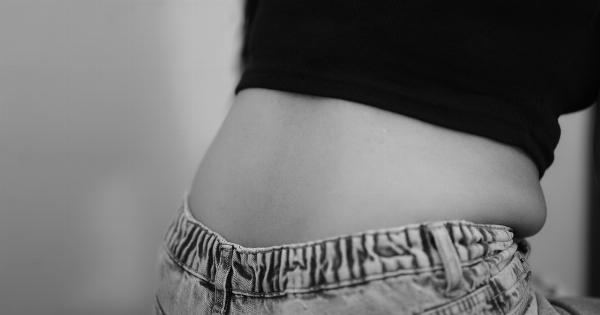Incontinence can be a distressing condition that affects millions of people around the world. It refers to the involuntary loss of urine or feces, which can significantly impact a person’s quality of life and self-esteem.
However, there is good news for those dealing with incontinence. There are effective solutions available that can help manage and even overcome this condition.
In this article, we will explore some of the most promising strategies for dealing with incontinence and regaining control over your bladder and bowel functions.
Understanding the Types and Causes of Incontinence
Before delving into the solutions, it’s important to understand the types and causes of incontinence.
There are several types of incontinence, including stress incontinence, urge incontinence, overflow incontinence, functional incontinence, and mixed incontinence.
Stress incontinence occurs when there is an increase in intra-abdominal pressure, such as when coughing, laughing, or exercising.
Urge incontinence, on the other hand, is characterized by a sudden and intense need to urinate, often followed by an involuntary loss of urine.
Overflow incontinence occurs when the bladder cannot fully empty, leading to continuous dribbling. Functional incontinence happens when physical or cognitive impairments make it challenging to reach the toilet in time.
Mixed incontinence is a combination of two or more types of incontinence.
The causes of incontinence can vary and may include pregnancy and childbirth, menopause, prostate issues in men, chronic coughing, certain medications, and neurological conditions.
Understanding the specific cause and type of incontinence is crucial for determining the most appropriate treatment approach.
Practical Lifestyle Changes to Manage Incontinence
For many individuals, making certain lifestyle changes can significantly improve their control over incontinence. Here are some practical tips that can help manage and reduce the frequency of incontinence episodes:.
1. Monitor Fluid Intake: Keep track of how much fluid you consume throughout the day. It is important to stay hydrated, but reducing fluid intake a few hours before bedtime may help minimize nighttime incontinence episodes.
2. Healthy Diet: Maintain a healthy diet with an emphasis on fiber-rich foods to avoid constipation, which can aggravate incontinence.
Certain foods and drinks, such as caffeine, alcohol, and spicy foods, can irritate the bladder and worsen symptoms.
3. Bladder Training: Gradually increasing the time between bathroom visits helps train your bladder to hold urine for longer periods. Start by trying to delay urination by just a few minutes and gradually increase the interval over time.
4. Pelvic Floor Exercises: Strengthening the pelvic floor muscles through exercises, such as Kegels, can improve bladder control and reduce the frequency of incontinence episodes.
5. Weight Management: Maintaining a healthy weight can alleviate the pressure on your bladder and reduce the occurrence of stress incontinence.
6. Avoiding Irritants: Identify and avoid substances that irritate your bladder. These may include certain medications, artificial sweeteners, and acidic foods and drinks.
Effective Medical Treatments for Incontinence
While lifestyle changes can help manage incontinence to some extent, certain medical treatments offer more targeted and effective solutions. Here are some of the most commonly recommended medical interventions for incontinence:.
1. Medications: Depending on the type of incontinence, your healthcare provider may prescribe medications to relax the bladder, reduce spasms, or tighten the muscles that control urine flow.
2. Pessaries: These are small devices that are inserted into the vagina to support the bladder and prevent leakage. Pessaries can be an effective option for women with stress incontinence.
3. Nerve Stimulation: Electrical stimulation of the nerves that control the bladder can help improve bladder control. This can be achieved through techniques such as sacral nerve stimulation or percutaneous tibial nerve stimulation.
4. Injections: In some cases, injecting bulking agents near the urinary sphincter can strengthen the muscles and reduce urine leakage.
5. Botox Injections: Botox injections into the bladder muscle can help control overactive bladder and reduce the frequency of urge incontinence episodes.
6. Surgery: In more severe cases of incontinence that do not respond to other treatments, surgical interventions may be considered. These can range from slings and bladder neck suspensions to artificial urinary sphincter implants.
The Role of Incontinence Products
In addition to lifestyle changes and medical treatments, the use of incontinence products can play a significant role in managing incontinence and maintaining a sense of normalcy.
Incontinence products, such as absorbent pads, adult diapers, and protective undergarments, provide a secure and discreet solution for managing urine or fecal leakage.
With advancements in technology, modern incontinence products offer high levels of comfort, absorption capacity, and odor control.
They are designed to fit discreetly under clothing and provide protection against leaks while allowing individuals to maintain an active and confident lifestyle.
It’s important to consult with a healthcare professional to determine the most suitable incontinence product for your specific needs. They can provide guidance on product selection and usage to ensure maximum effectiveness and comfort.
Seeking Emotional Support
Incontinence can take a toll on a person’s emotional well-being, leading to embarrassment, anxiety, and social withdrawal. Seeking emotional support is crucial in learning to cope with these feelings and regaining confidence.
Support groups, both in-person and online, can serve as a valuable resource for individuals with incontinence. These groups provide a safe space to share experiences, exchange advice, and offer emotional support.
Additionally, mental health professionals can help individuals develop coping strategies and address any emotional concerns associated with incontinence.
Embracing a Life Free from Incontinence
Incontinence can be a challenging and distressing condition, but it doesn’t have to control your life. With the right combination of lifestyle changes, medical treatments, and support, you can effectively manage and even overcome incontinence.
Remember, it’s essential to work closely with healthcare professionals to identify the underlying cause of your incontinence and determine the best course of action.
Through perseverance and a comprehensive approach, you can say goodbye to incontinence and confidently embrace a life free from its limitations.





























